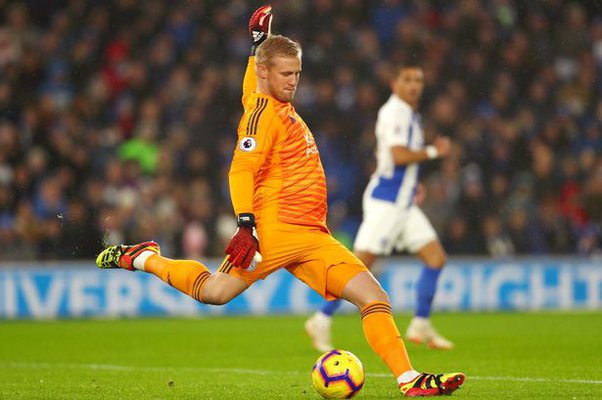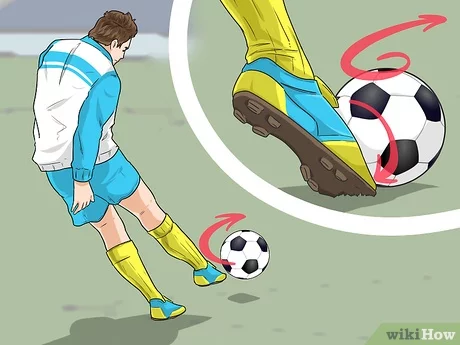The curving free kick, a sight that leaves defenses petrified and fans in a frenzy. This isn’t just magic, it’s science meeting skill. We’ll explore the Magnus Effect, the force that makes a spinning object curve, and the secret ingredient in a swerving soccer ball. But it’s not just physics! We’ll also dive into the footwork and precision footballers use to impart that crucial spin. Join us as we dissect the science and artistry behind the curveball, a dazzling display of athleticism and tactical mastery on the pitch.
The Magnus Effect Unveiled

The Magnus Effect, named after the German physicist Heinrich Magnus, is a crucial element in understanding how a soccer ball moves through the air. When the ball is kicked with spin, it creates a pressure difference between the top and bottom surfaces. This difference generates lift, causing the ball to swerve or curve in a direction determined by the direction of spin. It’s akin to the principles that govern an airplane’s lift, but in the context of soccer, it transforms a seemingly straightforward kick into a dynamic and unpredictable maneuver.
Mastering the Technique
“At the heart of a perfectly swerved shot lies a mastery of technique that goes beyond mere physical force,” explained David Martinez, a seasoned football coach at Elite Soccer Academy. “Skilled footballers understand the nuanced art of placing their foot in a precise position and orchestrating their body movements to impart the desired spin on the ball. It’s the finesse of these movements that distinguishes a routine kick from one that transforms the ball’s trajectory into a graceful dance through the air, catching opponents off guard.”
Bend It Like Beckham
The iconic phrase “Bend It Like Beckham” encapsulates the legendary free-kick prowess of David Beckham. His technique involved striking the ball with the inside of the foot, imparting a spin that made the ball curve around defensive walls. This technique not only showcased Beckham’s technical brilliance but also elevated the free-kick into an art form, influencing generations of aspiring players to emulate his signature style.
Curvature Control

The curving free kick isn’t just about raw power; it’s a masterclass in precision. Players wield this skill like artists, controlling the degree of curvature with pinpoint accuracy. By adjusting the angle of contact with the ball and the applied force, footballers can make the ball dip dramatically, swerve sharply, or even curl around defenders. This mastery of the swerve unlocks strategic brilliance on the pitch. Imagine sending the ball on a deceptive journey, leaving defenders flat-footed and goalkeepers guessing – that’s the power of a perfectly curved free kick.
Wind and Weather’s Role
The environmental context, particularly wind, introduces an additional layer of complexity to the swerving game. Accomplished players factor in the wind’s direction and intensity, incorporating this knowledge into their kicking strategy. Adapting the swerving technique to varying weather conditions demonstrates a level of situational awareness that sets elite players apart on the field.
Strategies for Swerving Success
Beyond the aesthetic appeal, swerving serves tactical purposes in offensive and defensive scenarios. In attack, players may use swerving shots to outsmart defenders or place the ball strategically. Defensively, the precision of swerving aids in clearances and interceptions, showcasing the multifaceted utility of this skill.
Training for Precision

Becoming a proficient swerver requires dedicated training. Players engage in drills that not only enhance their foot-eye coordination but also refine the muscle memory required for consistent and controlled swerving. These drills prepare players for various game scenarios, ensuring they can execute swerving kicks with precision under diverse conditions.
Legendary Swervers in Action
The history of soccer is punctuated by moments of brilliance where legendary players showcased extraordinary swerving skills. Roberto Carlos’s physics-defying free-kick against France in 1997 or Juninho Pernambucano’s consistently accurate set-piece mastery stands as a testament to the impact of swerving on the grand stage.
The Aesthetics of Swerving
The curving free kick transcends mere technique. It’s a breathtaking spectacle, adding a layer of artistry to the beautiful game. Imagine the ball tracing graceful arcs, defying expectations with sudden dips and swerves. A well-executed curve transcends the physical, becoming a visual symphony. Each bend tells a story, a testament to the player’s skill and the captivating allure of soccer. It’s a dance between precision and artistry, leaving fans mesmerized by the magic that unfolds on the pitch.
In soccer’s artistry, swerving is a mesmerizing dance of science and skill. From the Magnus Effect to Beckham’s finesse, it’s a tale of precision. As players master the technique, adapting to wind and strategy, each swerve paints the field with beauty. In this dynamic evolution, soccer’s allure is forever entwined with the magic of a perfectly swerved ball. For more such posts please visit our Fitness section.



